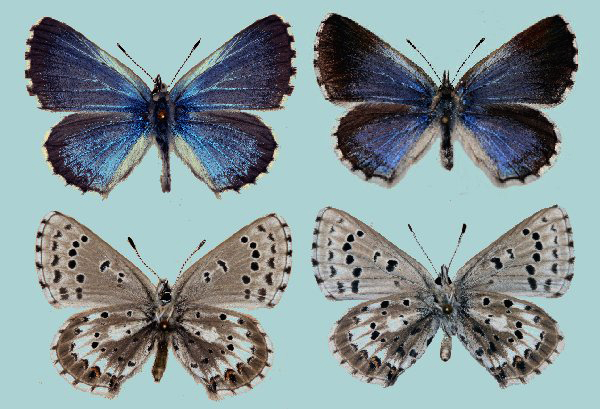Glaucopsyche piasus daunia

Photo Life History: Glaucopsyche piasus daunia
Habitat: Mountain Canyons; Mountain Hilltops.
Host Plants: Lupinus argenteus
Suitable Lab Host Plants:
How to Find Female Butterflies: Females can be found flying near larval host plant.
How to Care for Live Female Butterflies: Click here.
Methods of Female Oviposition: Twin Cup Method; Small Squat Tub
How to Find Eggs: Look on Flower Buds (Can be difficult to locate when arrowhead blues fly with silvery blues where the latter dominates.)
How to Hatch Eggs: Separate eggs individually.
How to Find Caterpillars in the Field: Look for Ants Tending Caterpillars. (Can be difficult to locate when arrowhead blues fly with silvery blues where the latter dominates.)
Caterpillar setups: Open terrariums; Twin Cup Method.--Because cannibalism is a concern with this and other lycaenid larvae, it is best to separate them out either in a open terrarium setup, or using the twin cup method. It is more work; but, you gain more control by separating out larvae into small twin cups as shown on this photo.
Larva to Pupa: Larva Changes Color.
How to Find Pupae in the Field:
Number of Broods per Year: 1
Overwintering Stage: Pupa.
Overwintering Strategies: Your Own Backyard; Refrigerator
Post-Hibernation Strategies: Post-diapause pupae be exposed to long-day photoperiod , increased temperature, and high humidity.
Avoiding Diapause Techniques: None known.
Disease Prevention: Change out host plant and remove frass every two to three days in a twin cup setup; every 5 days in an open terrarium setup.
Emergence: Emergence Container
Field Notes: Locating adults and immatures of the arrowhead blue is somewhat difficult in Northern Utah (vic. of Bountiful Peak) because most populations of G. piasus fly in sympatry with G. lygdamus where the latter flies in much greater numbers. For every 25 Glaucopsyche larvae you locate on Lupinus argenteus, roughly 23 or so are G. lygdamus and 2 are G. piasus. It is also difficult to separate the two species based upon larval characters. Females will lay eggs in captivity, however.

